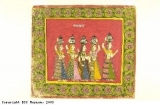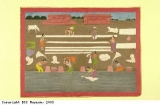The East Indies
Since the 14th century European explorers had gone to areas of the world which were new to them. After arriving in Africa, the Americas and Asia, European powers wanted to own, or colonise , them. These new continents offered wealth and power to the European countries. Vast areas of the world were divided up and fought over by the Europeans. Britain owned parts of America and the Caribbean, and had strong links with numerous places in Africa and Asia.
In the 17 and 18th centuries, the islands of the East Indies in the Indian Ocean were the source of many of the luxury goods which were highly valued in Europe. European powers were colonising this area and the luxury goods which were found there were traded across the world.
Limited supplies of these luxury goods meant high prices. Spices for food and medicines, tea, coffee, silk and cotton textiles and pepper were all traded to Europe via complex trade routes and numerous middlemen. In the 15th century, Venice in Italy was the European port that traded with the East. In the 16th century, the Portuguese began exploring the world. Portuguese sailors reached the southern tip of Africa and then sailed across the Indian Ocean to the west coast of India. They also reached the many islands of what is now Indonesia.
Europe’s trade in luxury goods with the East Indies is linked to the transatlantic slave trade from West Africa. China tea and Indian cloth were bought in the East Indies and were both important to the slave trade. Tea traded from China became a fashionable drink in 17th century Europe, but it was bitter. Sugar was grown on the European-owned slave plantations in the Caribbean. It was brought to Europe and sold as a luxury product, perfect for sweetening the fashionable new drink of tea. Indian cloth, also brought back by European traders from the East Indies, was then taken to West Africa and traded with African traders. This painting shows lengths of cloth used as turbans, laid out to dry. Cloth was one product used to trade for enslaved people in the transatlantic slave trade, and for other African goods such as ivory.




